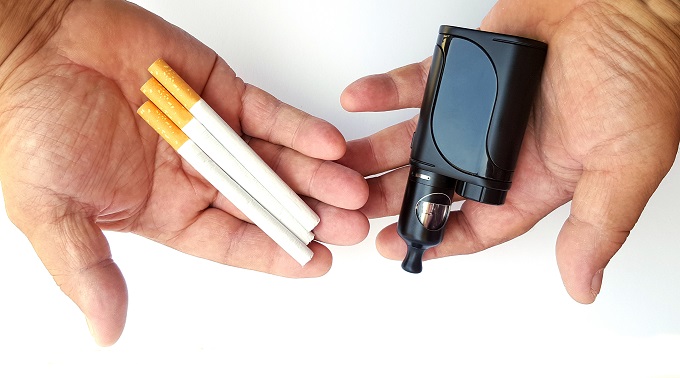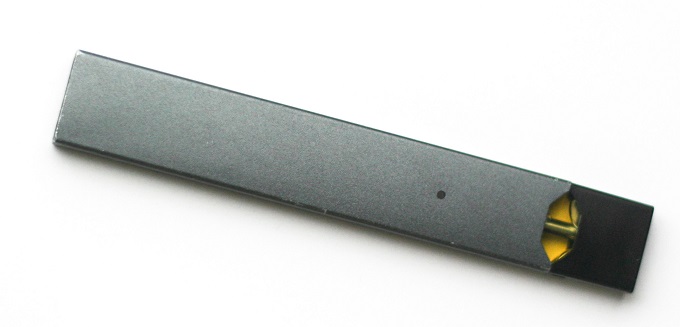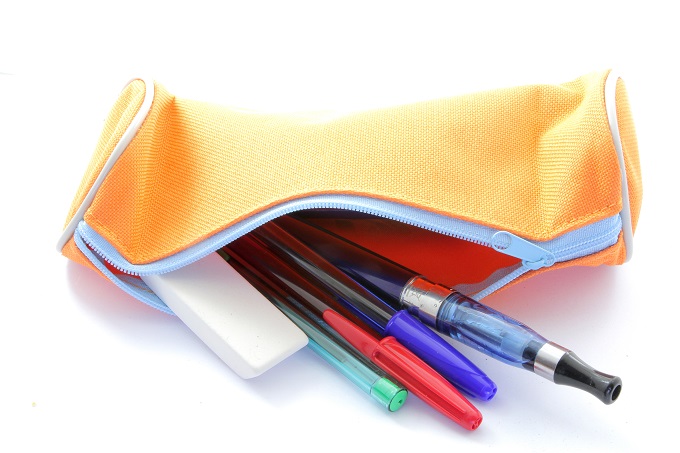What schools SHOULD do about teen vaping
We all read the ‘vaping epidemic’ anecdotes from principals that hit headlines last year…

We wrote this report for our Term 1 issue of School News! Click here to check out the full-length piece (and the rest of the mag).
Anecdotes from NZ principals warn youth vaping is a problem
In December, Nelson school principals called for vaping regulations after they claimed primary school children were found experimenting with a vape. Principals told Stuff at the time: “The message about cigarettes has been heard fairly loud and clear, but vaping is not seen in the same light at all at this point.” Auckland Grammar School principal Tim O’Connor told Newshub in August that half his junior students had either owned a vape or experimented with one.
Director of wellbeing at St Peter’s Cambridge, Micheal Brown, told the NZ Herald that his school was developing a therapeutic model to help around 70 students with a nicotine addiction. He said these students were ingesting vape liquid containing more than double the amount of nicotine in a single cigarette.
International hysteria
The number of US high school students using e-cigarettes shot up 78 percent to 3.6 million in 2018 from 2.1 million in 2017, according to a survey by the Centers for Disease Control and Prevention. The numbers prompted CDC director Robert Redfield to warn: “The skyrocketing growth of young people’s e-cigarette use over the past year threatens to erase progress made in reducing youth tobacco use. It’s putting a new generation at risk for nicotine addiction.”
Meanwhile, casual depictions of teenage vaping in mainstream TV shows like HBO’s high school drama Euphoria and jokes about sweet flavoured vape products appealing to children on The Simpsons, drew criticism from parents and educators.
JUUL, a brand of e-cigarettes, gained popularity among US high school students because the devices resembled USB sticks and could supposedly go unnoticed by parents and teachers. They became such a problem in the US that JUUL CEO Kevin Burns apologised to parents.
“I’m sorry,” he told CNBC reporter Carl Quintanilla, “I hope there was nothing that we did that made it appealing to them.”
Amid criticism, the company shut-down its social media accounts and pulled fruitier flavours that may have appealed to teenagers. Most recently, the Trump Administration moved to ban flavoured e-cigarettes altogether, stirring up major backlash from anti-smoking advocates, the vaping industry and children of former smokers. During one Maryland flavour ban hearing, a young boy told the committee he was afraid his dad would go back to smoking without flavoured vapes.

What is really happening? Research asks NZ teens
Is there a youth vaping epidemic in this country? No.
Not according to the latest research, anyway. But some teenagers are vaping, and the numbers have increased since 2014.
In January, a group of researchers from the University of Auckland and ASH New Zealand published results from an anonymous survey of almost 30,000 Year 10 students, examining the prevalence of teenage vaping in 2019. Their findings did “not support the idea of a so-called youth vaping epidemic in Aotearoa New Zealand”, as lead researcher Dr Natalie Walker asserted in a University of Auckland media statement.
The report reads: “Between 2014 and 2019, an increase in the proportion of 14–15-year-old students who had ever tried an e-cigarette was observed, along with a general decline in the proportion of youth who had ever smoked cigarettes.”
School News spoke to Dr Walker at length about her findings to better understand the implications for principals and educators. She told us that this was the only major survey “actually asking young people what is going on” and “does not measure what is seen by the principals”.
Dr Walker said: “The findings support the views of the principals in that, yes, about 40 percent of 14 to 15-year-olds in 2019 had ‘ever tried’ vaping in their life, with this figure ranging between 30 and 60 percent depending on ethnicity, gender and school decile. However, very few students report using these devices on a regular basis (such as at least monthly, weekly or daily), and the ones that do are predominantly smokers.”

More regulation still needed
According to the Ministry of Health’s Vaping Facts website: “Vape devices and e-liquids are regulated under the Smoke-free Environments Act 1990. However, this wasn’t designed for vaping and there are no safety standards on what can be sold.” The Ministry of Health has an online quiz designed for smokers to learn about vaping as a quitting tool.
Calls from schools to regulate vaping have been heard by the vaping industry. Vaping Trade Association spokesman Jonathan Devery told RNZ that while e-cigarette products are R18, it is important to “limit youth access and work with the government to ensure it’s damn near impossible for youth to get their hands on these products”. He also said the government has stonewalled offers from the vaping association, which represents 50 different e-cig retailers, to share data.
Updates on regulation have been slow from the government but Associate Minister of Health, Jenny Salesa did tell RNZ that “amending the Smoke-free Environments Act 1990 to cover vaping and vape products is no small task. This is a detailed, technical bill. It is taking time to work through the details so that we can have a future-proof framework ready to present to parliament”.
She also stressed last year that vaping may be key to reducing high smoking rates among young Māori women. She advised the news outlet that “…the rate of our young people who are taking up smoking has really reduced. In fact, in 2002 Year 10 young people who were smoking was at a rate of about 12.4 percent, but the latest information we have, 2018, it has actually decreased to … only 1.9 percent.”
Despite slow government progress, it has been widely reported that New Zealand will move to ban most flavoured vape liquids, which some claim may dissuade regular smokers from switching to vapes or encourage people to mix their own flavours.
Dr Walker said: “I do think e-cigarettes/vaping and tobacco should be more regulated. Clearly youth under the legal age of 18 years are getting access to tobacco and e-cigarettes, so there needs to be some changes. It’s complex though. You want to maximise the benefits of e-cigarettes (i.e. helping smokers, of any age, to quit tobacco-use), while minimising any potential harm (e.g. minimising use of nicotine-containing e-cigarette by non-smokers, of any age).
“Whatever the regulation is for e-cigarettes, the regulation should be more stringent for smoked tobacco (because it has the greater harm).”
Asthma & Respiratory Foundation New Zealand chief executive Letitia Harding called for clearer restrictions around vape product advertising. She told us it should be monitored, “not self-monitored”, and that stores selling vapes should “also provide mandatory information on smoking cessation services if that is indeed the role they say they are playing”. She advocated for a ban on window advertising and said shops should be specialised over-18 outlets. She also said vape products should “require disclosure of ingredients on labels” and that the government should “set standards and robust testing to ensure all is safe”.
“This is the bare minimum for any industry, and something they should be working towards.”
Dr Marewa Glover, a tobacco control researcher at the Centre of Research Excellence: Indigenous Sovereignty and Smoking said that while she supports more government regulation of vaping products, it needs to differentiate between nicotine vape products and those that “now exist for vaping CBD or THC extracted from cannabis”.
“Cannabis-use is illegal. How will legislation about vaping products distinguish between vaping products? What implications does this have for monitoring and enforcement?”
E-cig education in schools: good or bad?
While everyone we spoke to agreed the government should regulate e-cigarette products, less consensus was reached regarding schools.
Dr Walker said: “I think a co-ordinated approach is required, led by the NZ government. Smoking cessation services, especially those who are used to working with youth, should be part of the process as they understand how to support people who have a nicotine addiction. NGOs that don’t support the NZ government’s stance on e-cigarettes as a harm reduction tool and/or who are not trained in smoking cessation support, should not engage with schools, as the mixed messages they promote create distrust and confusion.”

Dr Glover was firmly against preventative anti-vape campaigns entering schools. She told School News: “It is important not to raise awareness or trigger curiosity about smoking, using alcohol, vaping or smoking or vaping cannabis, among children and youth who are not at-risk of experimenting with any of these behaviours. A very small minority of New Zealanders smoke tobacco and even less children than ever before are at risk of experimenting or taking up smoking. Any discussion of at-risk behaviours should be done within the context of standard education practices, outside of that, information should be available for students who are most at-risk.”
The Asthma & Respiratory Foundation New Zealand has been promoting its new campaign, Don’t Get Sucked In, which is not government-funded and centres around an online vaping quiz designed for teenagers to test their misconceptions. The Foundation came under fire on Twitter when Dr Glover argued that “going in to schools and raising awareness and curiosity about vaping” is very likely “to increase vaping experimentation”.
Ms Harding told School News: “All the Foundation is doing is adding to [the] discussion. This is important when we have vape advertising out there… Vape shops have very colourful and enticing displays, which are attractive to youth… Vaping is harmful and currently youth aren’t being informed of this. The role that schools can play is to direct kids to the website if they want to have questions about vaping answered. Its voluntary, we certainly aren’t going into schools ourselves, as we believe that the schools themselves know whether this is an issue or not, and that may differ around the country.”
According to Dr Glover: “In the case of vaping, schools need to take advice from the Ministry of Health if they are concerned. When public health agencies, and teachers and school principals lie about the risks of vaping, they lose credibility with youth, parents and the public.
“It is totally appropriate for schools to ban smoking, alcohol use, cannabis use and vaping on school grounds. They should follow their standard disciplinary procedures for talking with students and their parents, where a student has been found using, encouraging others to use, or selling any of these substances or products on school grounds.”
School News has seen several schools cross New Zealand and Australia formally ban e-cigs on school grounds, add vape discussions to health lessons or wellbeing programs, host discussions about vaping with parents, and/or talk to students about nicotine addiction. While Dr Walker told us she broadly supported these ideas, she had the following caveats…
On vape bans: “Schools ban phones during school time because they are a distraction, so banning e-cigarettes (another distraction) during school time seems appropriate. However, there are three groups that need to be managed.
“First, a small number of youths vape and smoke tobacco regularly; how do these children get through a school day without going into nicotine withdrawal and how are they supported to quit smoking tobacco as soon as possible?
“The school has a duty-of-care to identify and support these children during the school day – this support could be ensuring they wear a nicotine patch, or use nicotine spray, lozenges or gum during the day.
“For some children this may include using a nicotine e-cigarette during the day – how this is managed within the school grounds is decided through respectful and positively-framed discussion between the school, the child, the child’s guardians (as appropriate) and (ideally) smoking cessation support services.
“Second, a very small number of youths vape nicotine daily (but don’t smoke tobacco). How do these children get through a school day without going into nicotine withdrawal? Finally, some teachers smoke tobacco and/or vape: how are they supported on school grounds?”
On educating parents, Dr Walker noted that while this is important, “the education should be framed around harm reduction, and should support the NZ government’s position on e-cigarettes, as mixed messages create distrust and confusion. Some parents in the audience will smoke and/or vape – so the event should be a respectful and positively-framed discussion.”
On including vape discussions in health curricula, Dr Walker suggested this is “a good idea (and ideally started around Year 6), but the education should be around harm reduction.”
She clarified: “It’s a fine balance, because you want to minimise increasing the risk of a non-smoker trying vaping (out of curiosity) versus ensuring a child is, first, supportive of friends and family members who vape (because they stopped smoking) and, second, encouraging to friends and family members who smoke, by supporting them to quit or switch to vaping.”











I assume that the writer does not know that smoking (and that includes vaping) is illegal on all school grounds in New Zealand. She may also need to know that what ever the research she has read says, my experience is that a lot of children are vaping. It is not something I am comfortable promoting.
Hello Howard, as I say in the article – smoking and nicotine products (including vapes) are illegal on school grounds and it is also illegal to sell them to minors. However, my research and the research I have written about here found that teenagers are still vaping (increasingly so). They are not vaping at ‘epidemic’ levels but it is indeed happening. So I asked several experts to weigh in on what schools can/should do to mitigate this. The big debate is whether there should be an ‘anti-vape’ campaign directed at teenagers – some believe this could be helpful as many teenagers don’t understand how vaping could harm them, but others feel a campaign would simply pique curiosity and make the number of teen vapers soar. No-one is advocating that schools should promote vaping.